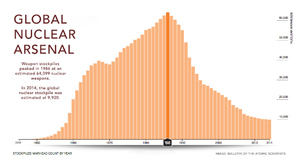From Discussions VOL. 11 NO. 2Using Flow Cytometry and Quantitative Real-Time PCR to Investigate the Role of IL-1 in T-Cell Proliferation and HIV- 1 ReactivationDiscussionIn this study, flow cytometry and quantitative real-time PCR were used to address how inflammatory cytokine IL-1β is associated with HIV latency. Measuring CFSE dilution by flow cytometry allowed direct measurement of cell proliferation stimulated with IL-1β. As the two acetate groups in CFSE fluorescence allowed the dye to readily cross the plasma membrane of the cell during division, cell by covalently attaching to cellular proteins. Since CFSE fluorescence divided in half after each cell division, the intensity of fluorescence in the remaining cells indicated the extent of cell proliferation (Berg et al., 2010). It was observed that IL-1β induces cell proliferation (Figure 2 and Figure 3). Figure 4. Real-time PCR Analysis. In representative patient 5224 (Viral load: 9618 copies/mL), the plasmid containing the viral sequence was amplified and analyzed by replicates using a real-time PCR. (a) Standard curves, made from plasmid containing the U5 sequence diluted in TE buffer and yeast RNA, were used to determine the quantity of RNA levels. (b) The graphs obtained from PCR made quantification of the level of residual viral matter possible. (c) After 7 and 12 days of treatment, IL-1β led to a low but detectable level of viral RNA. The viral RNA levels were shown as fold change (top) and actual copies per mL (bottom). In addition, real-time PCR was used to detect viral RNA by amplifying the target sequence generated through denaturation, annealing, and extension. Since RNA is singlestranded, a complementary DNA strand is synthetized from the viral RNA using a reverse transcriptase. In the first step, the reaction temperature is raised to denature the DNA. When heat is applied, the hydrogen bonds within the DNA break to form two single strands. The temperature is lowered during the annealing stage. Specific primers and polymerases are attached to the sequences at each end of the target DNA. In the extension stage, the intervening DNA is synthesized by polymerase reaction in opposite directions in order to build a complementary strand. PCR allows the virus to be detected in a small target sequence. A single-stranded DNA probe, which contains a fluorescent molecule and a quencher, is hybridized to the part of the DNA sequence synthesized between the two primers. By absorbing light energy emitted by the fluorescent molecule, the quencher allows the fluorescent molecule to emit detectable light when the fluorescent molecule is released from its neighboring quencher (Laird et al., 2013). Therefore, in each PCR cycle, the amount of emitted light doubles as the fluorescent molecule is released from the quencher. The amount of viral RNA is then determined by a reference to the rounds of PCR in which the amount of fluorescence first crosses the threshold of detection, calculated from the standard curves shown in Figure 4a. The flow cytometry data indicates that IL-1β induces little viral reactivation, although it induces proliferation. However, in real-time PCR, viral RNA levels increased in the presence of IL-1β when the sequences were amplified. From these observations, it can be deduced that only a few T-cells produce virus make up a lot of virus to maintain the latent CD4 T-cell reservoir. Although IL-1β does not induce overt reactivation of HIV as shown in this study, this does not mean that IL-1β may not contribute to the maintenance of the reservoir. Over time, few cells may produce the virus after IL-1β treatment in the population that proliferates, or the population that does not. Therefore, further studies need to be conducted to assess the direct mechanism that addresses how the latent viral reservoir is maintained over time in HIV-1 infected patients. AcknowledgementsI would like to thank Dr. Michael Freeman who has helped me immensely during this project as well as my time as a member of Lederman lab. His guidance and teachings have helped me develop and hone my skills as a researcher. I would also like to thank Drs. Souheil-Antoine Younes and JC Mudd for helping with initial studies for the project. I would like to thank Dr. Michael Lederman for giving me the opportunity to work in his lab. Last but not least, I would like to thank Dr. Rekha Srinivasan for her help as my advisor and a mentor whom without her guidance this project would not have been possible. ReferencesBerg, J., Tymoczko, J., & Stryer, L. (2010). 34: The Immune System. In Biochemistry (7th ed., Vol. 1, p. 798-805). New York: W. H. Freeman. Bosque A., Famiglietti M., Weyrich AS., Goulston C., Planelles V. (2011). Homeostatic Proliferation Fails to Efficiently Reactivate HIV-1 Latently Infected Central memory CD4+ T Cells. PLoS Pathog, 7(1): e1002288. Doyle T., Smith C., Vitiello P., Cambiano V., Johnson M., et al. (2012). Plasma HIV-RNA Detection below 50 copies/mL and Risk of Virologic Rebound in Patients Receiving Highly Active Antiretroviral Therapy. Clin. Infect. Dis., 54 (5): 724-732. Hall H.I., Song R., Rhodes P., Prejean J., Q, A., et al. (2008). Estimation of HIV incidence in the United States. JAMA, 300 (5): 520-529. Laird GM., Eisele E., Rabi S., Lai J., Chioma S., et al. (2013). Rapid Quantification of the Latent Reservoir for HIV-1 Using a Viral Outg rowth Assay. PLoS Pathog, 9(3): e1003398. Perdomo, M., Hosia, W., Jejcic, A., Corthals, G., and Vahlne, A. (2012). Human Serum Protein Enhances HIV-1 Replication and Up-regulates the Transcription Factor AP-1. Proc. Natl. Acad. Sci. USA., 109 (43): 17639- 17644. Perelson A.S., Essunger P., Cao Y., Vesanen M., Hurley A., et al. 1997. Decay characteristics of HIV-1-infected compartments during combination therapy. Nature 387: 188–91. Shive, C., Mudd, J., Funderburg, N., Sieg, S., Kyi, B., et al. (2014). Inflammatory Cytokines Drive CD4 T-Cell Cycling and Impaired Responsiveness to Interleukin 7: Implications for Immune Failure in HIV Disease. J. Infect. Dis., 210 (4): 619-629. Stover, K. (2014, July 10). ‘Mississippi Baby’ Now Has Detectable HIV, Researchers Find. Retrieved December 3, 2014, from http://www.niaid. nih.gov/news/newsreleases/2014/pages/mississippibabyhiv.aspx. Suggested Reading from Inquiries Journal
Inquiries Journal provides undergraduate and graduate students around the world a platform for the wide dissemination of academic work over a range of core disciplines. Representing the work of students from hundreds of institutions around the globe, Inquiries Journal's large database of academic articles is completely free. Learn more | Blog | Submit Latest in Biology |
















